
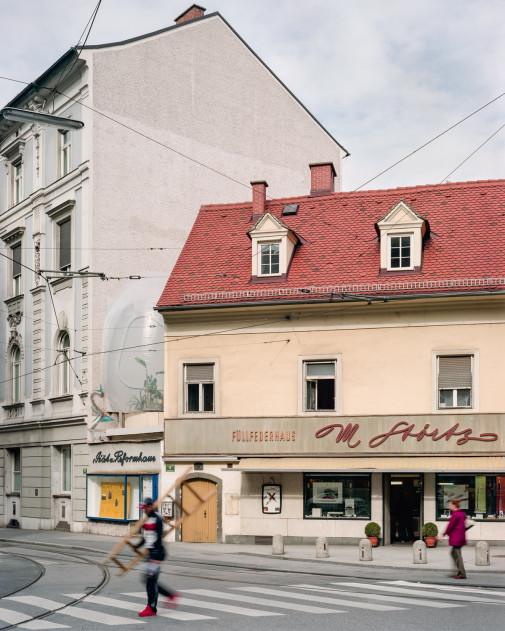
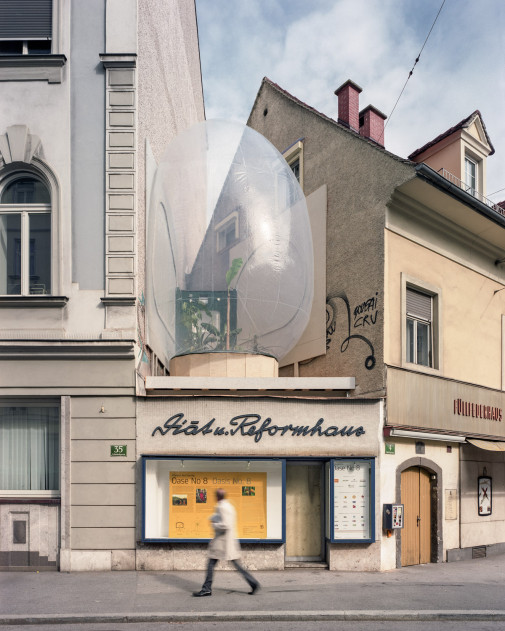
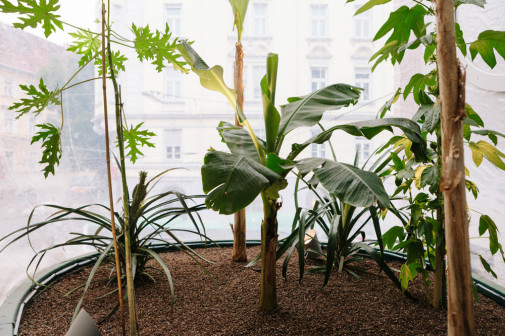
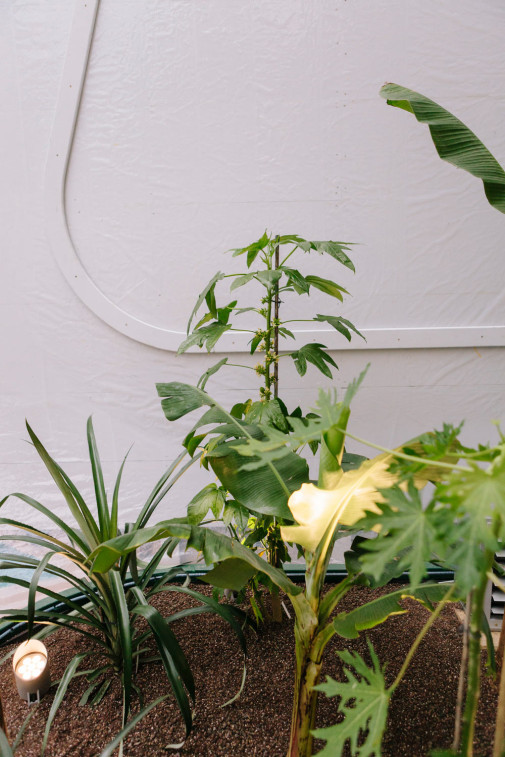
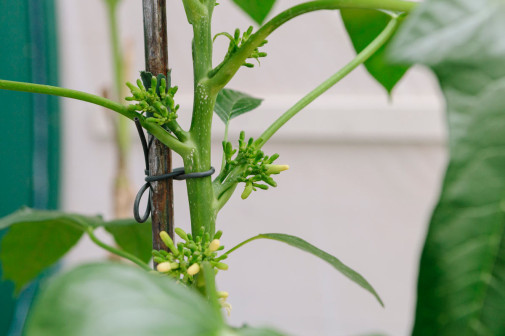
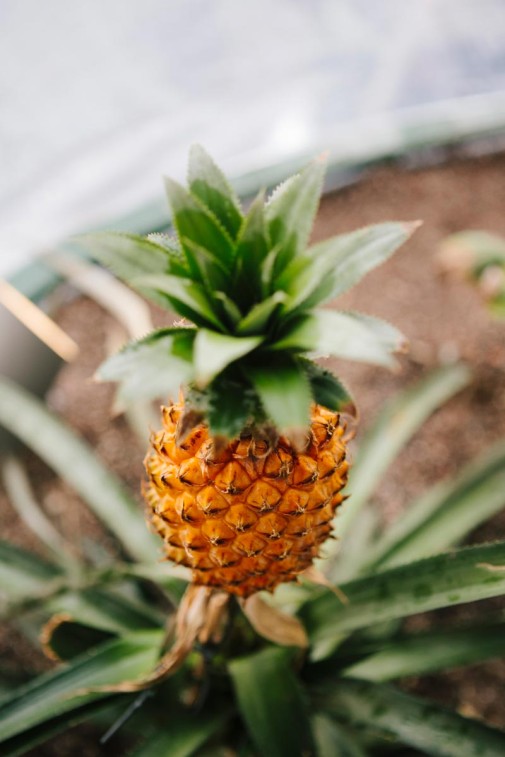

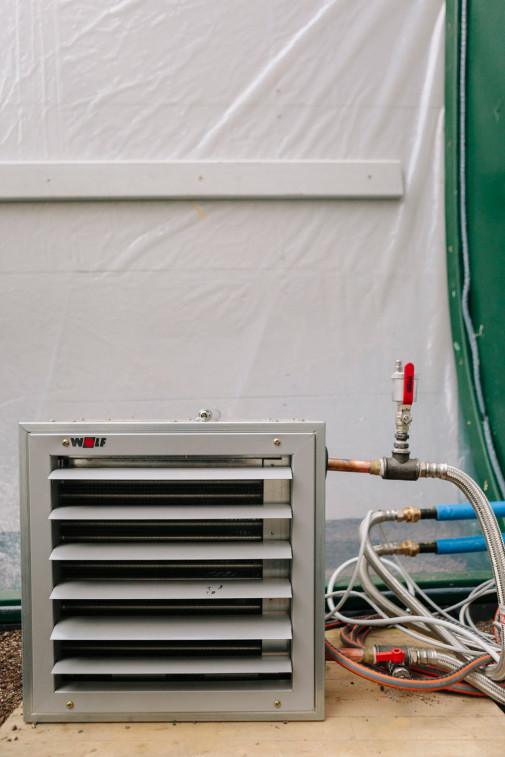

May 2016
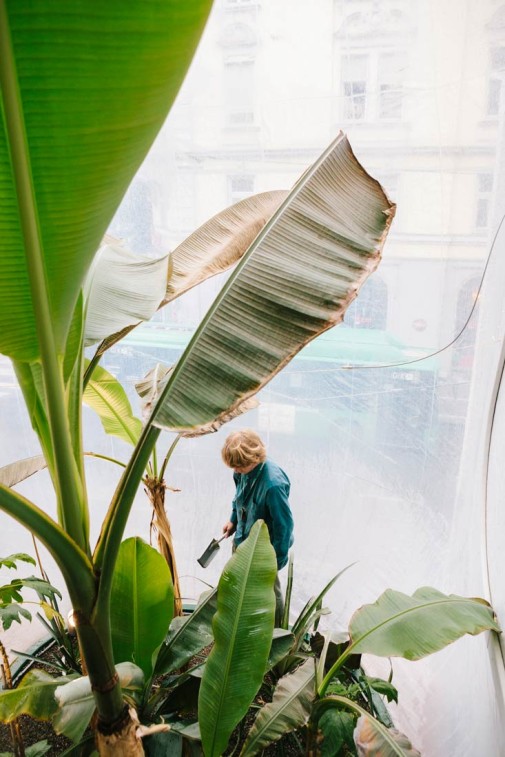
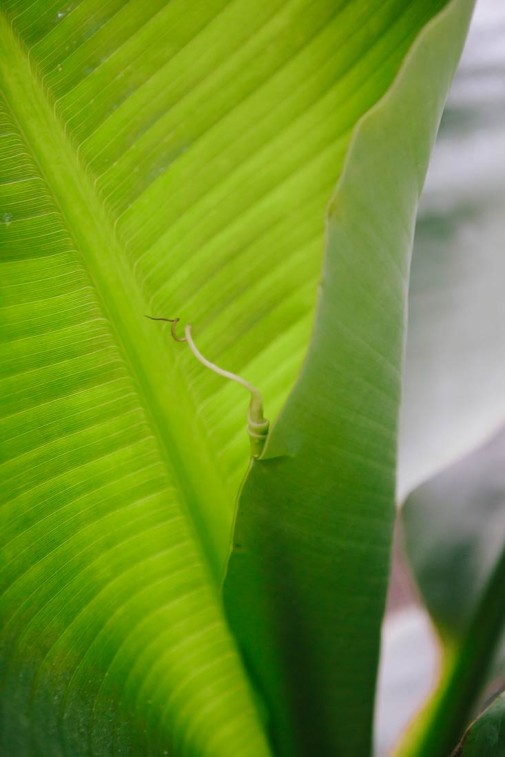
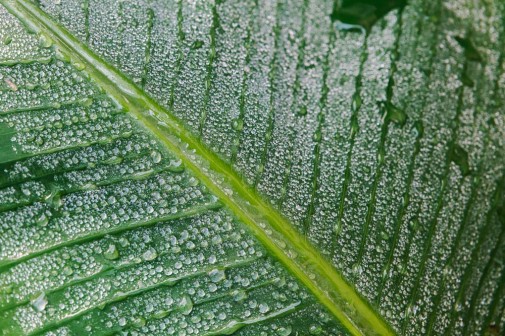

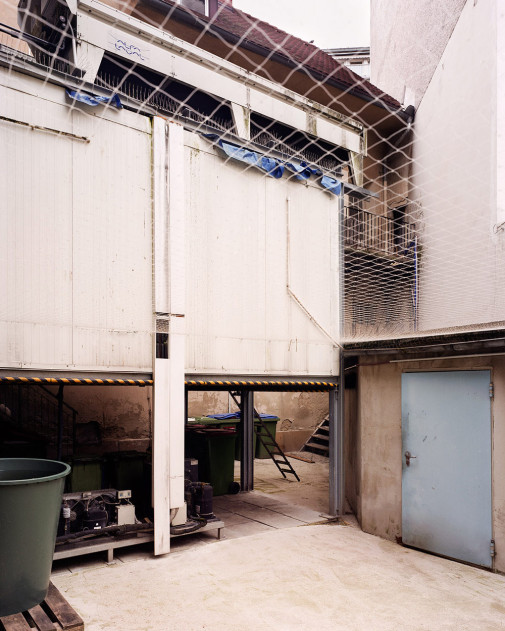

Oasis Nr. 8 – Markus Jeschaunig from KA21 / CastYourArt on Vimeo.
Concept
The 2015 implemented waste heat installation Oasis No. 8 is situated in a vacant lot in the city of Graz. Powered by the waste heat of refrigeration units from a Pizzeria and a bakery it creates a tropical micro climate for growing banana, pineapple and papaya plants. As a parasitic architectural intervention it can keep the interior climate of an EFTE bubble at more than 15° Celsius over the winter, the minimum temperature required by the tropical plants. The greenhouse bubble creates a contrast to the historic center of Graz and uses only unused energy, waste heat from a cold store. The volunteers of the ‘Bananahood’ is caring about the plants and controls the technical system via smartphone. In late summer 2016 Papaya and Banana fruits have been harvested and tasted by the public. The project is an attempt to reveal energy potentials, criticize established systems and demonstrate new modes of action.
Theory behind the project:
Statistically, the banana is the most popular tropical fruit in several European countries and available in supermarkets all year round. Getting to enjoy bananas and other tropical fruits in Europe requires a high level of energy and global logistics. Harvested while still green, the fruits are shipped from exporting countries with subtropical climates to Europe. This way of consumption stands for the current ecological foot-print “ requiring 1.5 Earths to meet the demands humanity makes on the biosphere. To enter in global action against climate change, (local) built environment has to access synergetic natural systems. Material flows will have to run from ‘cradle to cradle’ and biotic and non-biotic systems must be united.
Synergetic urbanism
’Synergetic urbanism’ is an answer on the challenges of climate change. Inspired by the dynamics and forces of the lithosphere, hydrosphere, atmosphere and biosphere, synergetic urbanism activates local resource- and material flows in order to create zero-emission products, cities and life. Synergetic space strategies utilize locally harvested energy rather than supplied high-quality energy.
Urban oasis “ Reacting prototypes
The concept of “urban oasis” intents to harvest, accumulate and transform energy streams and potentials in the urban field into synergetic cycles. Focusing on waste-heat places in the city (such as the office-, industry- and food sector), automated + social installations in different scales try to develop solutions for food production or any other needs. The installation Oasis No. 8 (2015/16) can be seen as a prototype for using local available energy sources for the production of food in urban settlements.
In collaboration with the Botanical Garden Graz and the Institute for Art in Public Space Styria.
Energy Design: DI Sautter – advanced energy consulting, Graz
Project Folder Download
Photo credits: (from top) 1, 3, 9 (c) Simon Oberhofer, 2, 4, 5, 6, 7, 8 (c) Sebastian Reiser
Awards:
KlimARS Prize 2016
Environmental prize City of Graz
BAUWELT PREIS 2017
Laka competition 2016 – 3rd prize
Main sponsors:
KEBA AG
forum – Kunstuniversität Linz
Stahl und Walzwerk – Marienhütte Gesmbh
Novum Membranes GmbH
Bundeskanzleramt Österreich – Sektion Kunst
Amt der Steiermärkischen Landesregierung – A14 Referat: Abfallwirtschaft und Nachhaltigkeit
Siemens AG Österreich – Building Technologies Division – Branch Graz
Institute for Art in Public Space Styria (Land Steiermark)
Botanical Garden Graz
With generous support:
Sanlas Holding
DI Sautter – advanced energy consulting (energy design)
LEICHT – Structural engineering and specialist consulting GmbH
Pizzaria DaPina
Füllfederhaus Störtz
Backwerk
XAL GmbH
Stadt Graz – Kultur
HDA – Haus der Architektur, Graz
Heiz-Hofstätter – Dipl. Ing. Anton Hofstätter GesmbH
EOSS Industries Holding GmbH
MEILAND Immobilien GmbH
St. Veiter Schlössl Immobilien GmbH
Clemens Mock – Rendering & Visualisierung
plateau – DI Martin Knapp (structural engineer)
Product partners & sponsors:
Neussl Ges.m.b.H.
G & P AIR SYSTEMS VertriebsgmbH
Carrier Kaeltetechnik Austria GesmbH
DK-Kaelteanlagen GmbH
Wolf Klima- und Heiztechnik GmbH
Kan-Tec Elektrotechnik
ista Österreich GmbH
Geberit Vertriebs GmbH & Co KG
ChemRes GmbH
Reflex – Thinking Solutions
Tippler Energie Bau
A.Rauch GmbH
JH Naturrein Biogarten GmbH
Floristik Rosenrot
Special Thanks to all participants of the Bananahood!

